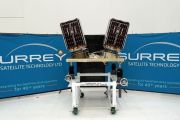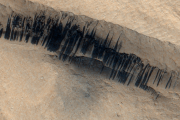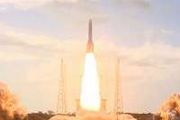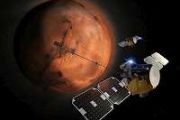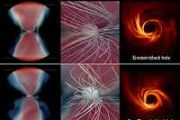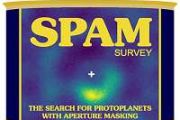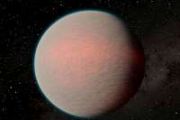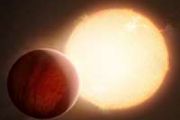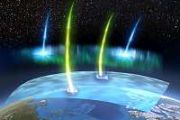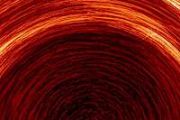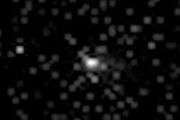
Copernical Team
AFRL, industry launch revolutionary spacecraft technology
 The Air Force Research Laboratory has partnered with ThermAvant Technologies and Maxar Technologies to develop and deploy the next generation of spacecraft thermal control technology.
The groundbreaking technology, Oscillating Heat Pipes (OHPs), provides lightweight and highly efficient temperature control on higher power yet smaller spacecraft. The OHP was recently launched in the second
The Air Force Research Laboratory has partnered with ThermAvant Technologies and Maxar Technologies to develop and deploy the next generation of spacecraft thermal control technology.
The groundbreaking technology, Oscillating Heat Pipes (OHPs), provides lightweight and highly efficient temperature control on higher power yet smaller spacecraft. The OHP was recently launched in the second GOP senator wants more cash hypersonic missiles
 Earlier this week, Western media alleged that China had carried out a missile test in the summer involving a nuclear-capable hypersonic glide vehicle. Beijing dismissed the claims, saying its test involved reusable rocket technology. On Thursday, the Financial Times reported that the PRC had carried out not one, but two hypersonic missile tests.
Republican Senator Lindsey Graham has sugges
Earlier this week, Western media alleged that China had carried out a missile test in the summer involving a nuclear-capable hypersonic glide vehicle. Beijing dismissed the claims, saying its test involved reusable rocket technology. On Thursday, the Financial Times reported that the PRC had carried out not one, but two hypersonic missile tests.
Republican Senator Lindsey Graham has sugges US Army, Navy hold 3 successful tests in bid to advance hypersonic weapons'
 Last month, the Pentagon successfully tested an air-breathing hypersonic weapon capable of moving five times faster than the speed of sound.
The US Navy and Army tested hypersonic weapon component prototypes on Wednesday, the Pentagon said.
All three tests were successful, it added.
The US Navy has confirmed that it conducted a weapons test with the Army that demonstrated advan
Last month, the Pentagon successfully tested an air-breathing hypersonic weapon capable of moving five times faster than the speed of sound.
The US Navy and Army tested hypersonic weapon component prototypes on Wednesday, the Pentagon said.
All three tests were successful, it added.
The US Navy has confirmed that it conducted a weapons test with the Army that demonstrated advan Neutron star collisions are a "goldmine" of heavy elements, study finds
 Most elements lighter than iron are forged in the cores of stars. A star's white-hot center fuels the fusion of protons, squeezing them together to build progressively heavier elements. But beyond iron, scientists have puzzled over what could give rise to gold, platinum, and the rest of the universe's heavy elements, whose formation requires more energy than a star can muster.
A new study
Most elements lighter than iron are forged in the cores of stars. A star's white-hot center fuels the fusion of protons, squeezing them together to build progressively heavier elements. But beyond iron, scientists have puzzled over what could give rise to gold, platinum, and the rest of the universe's heavy elements, whose formation requires more energy than a star can muster.
A new study Breakthrough Listen releases analysis of previously detected signal
 An intriguing candidate signal picked up last year by the Breakthrough Listen project has been subjected to intensive analysis that suggests it is unlikely to originate from the Proxima Centauri system. Instead, it appears to be an artifact of Earth-based interference from human technologies, the Breakthrough Initiatives announced Monday. Two research papers, published in Nature Astronomy, discu
An intriguing candidate signal picked up last year by the Breakthrough Listen project has been subjected to intensive analysis that suggests it is unlikely to originate from the Proxima Centauri system. Instead, it appears to be an artifact of Earth-based interference from human technologies, the Breakthrough Initiatives announced Monday. Two research papers, published in Nature Astronomy, discu International workshop seeks to turn plans for crewed lunar observatory into reality
 Karan Jani, research assistant professor of physics and astronomy, co-chaired the first international workshop focused on gravitational wave detection on the moon. The workshop builds on Jani's recent studies that make the case for building a crewed, lunar-based observatory.
"We are at the dawn of a new space age, with the moon at the center of our campaign for the next several years," Jan
Karan Jani, research assistant professor of physics and astronomy, co-chaired the first international workshop focused on gravitational wave detection on the moon. The workshop builds on Jani's recent studies that make the case for building a crewed, lunar-based observatory.
"We are at the dawn of a new space age, with the moon at the center of our campaign for the next several years," Jan NASA awards $15M for asteroid hunting telescopes on Maui
 The University of Hawaii Institute for Astronomy (IfA) received a $15 million NASA grant to continue its world-leading efforts to discover Near-Earth Objects (NEOs) and Potentially Hazardous Asteroids (PHAs).
IfA's Panoramic Survey Telescope and Rapid Response System (Pan-STARRS) atop Haleakala currently finds nearly as many NEOs and PHAs as the rest of the world's observatories combined,
The University of Hawaii Institute for Astronomy (IfA) received a $15 million NASA grant to continue its world-leading efforts to discover Near-Earth Objects (NEOs) and Potentially Hazardous Asteroids (PHAs).
IfA's Panoramic Survey Telescope and Rapid Response System (Pan-STARRS) atop Haleakala currently finds nearly as many NEOs and PHAs as the rest of the world's observatories combined, NASA Mars Rover and Helicopter models to go on national tour
 Catch Mars mania as a traveling exhibit visits more than a dozen towns across the U.S. with lifelike models of NASA's Perseverance rover and Ingenuity helicopter.
While NASA's Perseverance rover and Ingenuity Mars Helicopter are hard at work exploring Mars hundreds of millions of miles from Earth, their "twin" models will be visiting museums as part of the "Roving With Perseverance" roadsh
Catch Mars mania as a traveling exhibit visits more than a dozen towns across the U.S. with lifelike models of NASA's Perseverance rover and Ingenuity helicopter.
While NASA's Perseverance rover and Ingenuity Mars Helicopter are hard at work exploring Mars hundreds of millions of miles from Earth, their "twin" models will be visiting museums as part of the "Roving With Perseverance" roadsh A world without access to space
 Over the last several years we have been yelling and screaming about the existential threat of space debris on our ability to conduct space commerce, but the world is not listening. Instead, several organizations continue to add new spacecraft to the near-Earth space environment while totally ignoring the ultimate consequences.
Just over the past 18 months the population of low-orbiting ac
Over the last several years we have been yelling and screaming about the existential threat of space debris on our ability to conduct space commerce, but the world is not listening. Instead, several organizations continue to add new spacecraft to the near-Earth space environment while totally ignoring the ultimate consequences.
Just over the past 18 months the population of low-orbiting ac Blue Origin, partners announce plans for private space station
 Jeff Bezos announced plans on Monday for Blue Origin to run the world's first private space station called the Orbital Reef, which would serve as a space business park and a regular destination for space tourists.
Blue Origin will partner with a Sierra Nevada Corp. subsidiary called Sierra Space, along with Boeing, Redwire Space and Genesis Engineer to make the space station happen.
Jeff Bezos announced plans on Monday for Blue Origin to run the world's first private space station called the Orbital Reef, which would serve as a space business park and a regular destination for space tourists.
Blue Origin will partner with a Sierra Nevada Corp. subsidiary called Sierra Space, along with Boeing, Redwire Space and Genesis Engineer to make the space station happen. 




